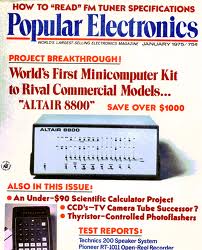 Byte was a hugely influential computer magazine that begain in 1975 and was published throughout the 1980s. It covered development in the entire field of software and computers, was published monthly, and sold for a yearly subscription of $10. The first issue was printed in September 1975, and featured ads from many companies that would become corporate giants in the near future. Early articles included do it yourself projects for your computer, and even software development for computer improvement. Significant articles were printed in the publication, including source code for Tiny C and BASIC, a first look at CP/M, and it also ran one of Microsoft’s first ads.
Byte was a hugely influential computer magazine that begain in 1975 and was published throughout the 1980s. It covered development in the entire field of software and computers, was published monthly, and sold for a yearly subscription of $10. The first issue was printed in September 1975, and featured ads from many companies that would become corporate giants in the near future. Early articles included do it yourself projects for your computer, and even software development for computer improvement. Significant articles were printed in the publication, including source code for Tiny C and BASIC, a first look at CP/M, and it also ran one of Microsoft’s first ads.
In 1979 Byte was sold to McGraw-Hill and moved away from the do it yourself theme of the early issues after the emergence of the IBM-PC to become one of the first computer magazines to do product reviews. By 1990 it had become an inch thick and boasted a yearly subscription price of $56, making it the must have computer periodical. The magazine launched a website in 1993, but then was bought by CMP Media and publication was ceased in July 1998 to the shock of readers and subscribers. The following year it was revived as a subscription web publication and has been thriving ever since.
When Byte was originally published by Wayne and Virginia Green, there was a fight over the magazine following a court case against their previous publishing company. Virginia Green retained control of the company however, and later Wayne paid damages after a few lawsuits for saying negative things about Byte.



